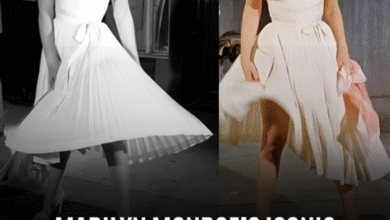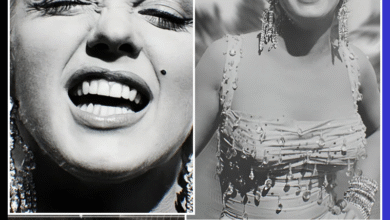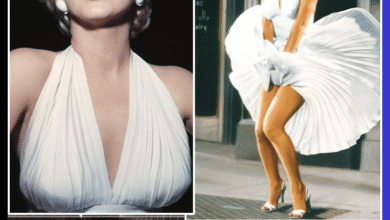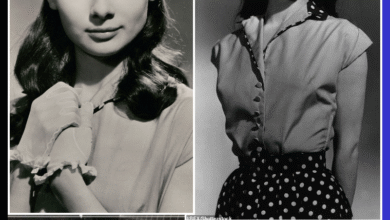The Surprising John Wayne Film Clint Eastwood Admires Most—Find Out Why It Stands Above the Rest!
OPINION: This article may contain commentary which reflects the author's opinion.
Clint Eastwood is undeniably one of the most iconic figures in the western genre, a genre that not only helped define his career but also shaped the way audiences think about masculinity, morality, and the American frontier. Known for his roles in the Dollars Trilogy and Dirty Harry, Eastwood’s career spans over six decades, and he remains a revered figure in Hollywood. However, while his contribution to western cinema is unquestionable, Eastwood’s relationship with the genre’s other titan, John Wayne, is more complex than one might expect. Despite Wayne’s towering influence over the genre, Eastwood has been open about his admiration for Wayne’s work — particularly Red River — but also about the ideological differences that set them apart, both professionally and personally.
The Western Influence on Eastwood’s Career
Eastwood’s journey into westerns began with the television series Rawhide, which set the stage for his legendary film career. “Subconsciously, I think you take from everybody,” Eastwood once reflected in a 1992 interview. He explained that while working on Rawhide, he would often find himself referencing the work of the greats—directors like Howard Hawks, Alfred Hitchcock, and John Ford. These formative years were essential in shaping his approach to the genre and his understanding of cinematic storytelling. However, despite the undeniable impact of these filmmakers, Eastwood has always been reluctant to claim John Wayne as a direct influence on his work.
In fact, Eastwood has made it clear that John Wayne wasn’t a major source of inspiration for him as an actor. He explained that during his early days on Rawhide, he learned from directors like William Wellman, Stuart Heisler, and Laszlo Benedek, all of whom helped shape his understanding of the craft. Yet, Wayne was not among those who influenced Eastwood’s portrayal of the rugged, antihero figures he would later become famous for.
John Wayne’s Influence and the ‘Red River’ Connection
Despite their different approaches to the western genre, Clint Eastwood has expressed a deep admiration for Red River, the 1948 film directed by Howard Hawks. In many ways, Red River represents a departure from the typical western, as it delves into the generational divide between two contrasting ideas of masculinity. The film explores the relationship between an older, rigid cattle driver (played by John Wayne) and his youthful apprentice, and it is often regarded as one of the best westerns ever made.
Eastwood’s respect for Red River goes beyond the film’s plot; it is a testament to Hawks’ ability to juggle different genres and tones, as he seamlessly moved from works like Red River to the screwball comedy His Girl Friday. Eastwood has repeatedly cited Hawks as one of the most influential directors in his own career, admiring his versatility and command of the medium. However, despite the admiration for Red River, Eastwood has always maintained that his portrayal of westerns, particularly his morally ambiguous antiheroes, contrasts sharply with the heroic figures that Wayne often portrayed.
The Ideological Divide: Wayne vs. Eastwood
As Eastwood’s career soared in the 1970s, Wayne’s was in decline. The two actors, despite their shared status as Hollywood icons, operated from fundamentally different ideological perspectives. Wayne’s on-screen persona was rooted in American ideals of honor, bravery, and moral clarity. He embodied the traditional values of the western, portraying characters who fought for justice and stood by their principles. Eastwood, on the other hand, became famous for his portrayal of antiheroes—flawed men with morally complex motivations who often operated outside the law.
This difference in approach led to a bit of friction between the two stars. Eastwood revealed that Wayne once wrote him a letter expressing his dissatisfaction with High Plains Drifter, a film in which Eastwood played a morally ambiguous character who takes control of a town by force. Wayne was critical of the film, suggesting that it didn’t align with the traditional portrayal of the West, and that it was more about the exploitation of the genre rather than honoring its roots. Eastwood, however, has always been unapologetic about his approach, emphasizing that he was interested in exploring the more nuanced and darker aspects of the western.
This ideological divide is said to have prevented any potential on-screen collaboration between the two men. A script for The Hostiles, written by Larry Cohen, was floated in the 1980s that would have pitted Eastwood and Wayne against each other in a climactic showdown. However, Wayne reportedly dismissed the project, effectively killing the idea of a face-off between the two western giants.
Eastwood’s Own Western Legacy
While Red River remains a standout for Eastwood, it’s clear that his own contributions to the western genre have been just as impactful. As an actor, he became synonymous with the genre in films like The Good, The Bad and The Ugly and Unforgiven. His portrayal of the “Man with No Name” in Sergio Leone’s Dollars Trilogy and his later roles as a weary gunslinger in Unforgiven elevated the western to new heights.
Beyond acting, Eastwood’s directorial contributions to the genre have further cemented his place as one of its greatest champions. Films like The Outlaw Josey Wales (1976) and Unforgiven (1992) explored the darker, more complex aspects of the western mythos, shifting the genre toward a more introspective and gritty direction. In many ways, Eastwood helped redefine the western for modern audiences, contrasting sharply with the ideals that Wayne had championed.
Conclusion: Two Giants, Different Paths
While Clint Eastwood and John Wayne shared the western genre, their interpretations of it were as different as night and day. Wayne’s heroic portrayals of strong, moral figures stand in stark contrast to Eastwood’s rugged, morally ambiguous antiheroes. Despite their differences, Eastwood has always admired Red River as a standout in the genre, and while Wayne may not have been a direct influence on his work, the mutual respect between the two icons is evident. Ultimately, Eastwood’s career stands as a testament to his willingness to push the boundaries of the western genre, and while Wayne’s legacy as a symbol of American masculinity in film remains intact, it’s clear that Eastwood carved his own path, bringing new depth to the genre he helped redefine.



